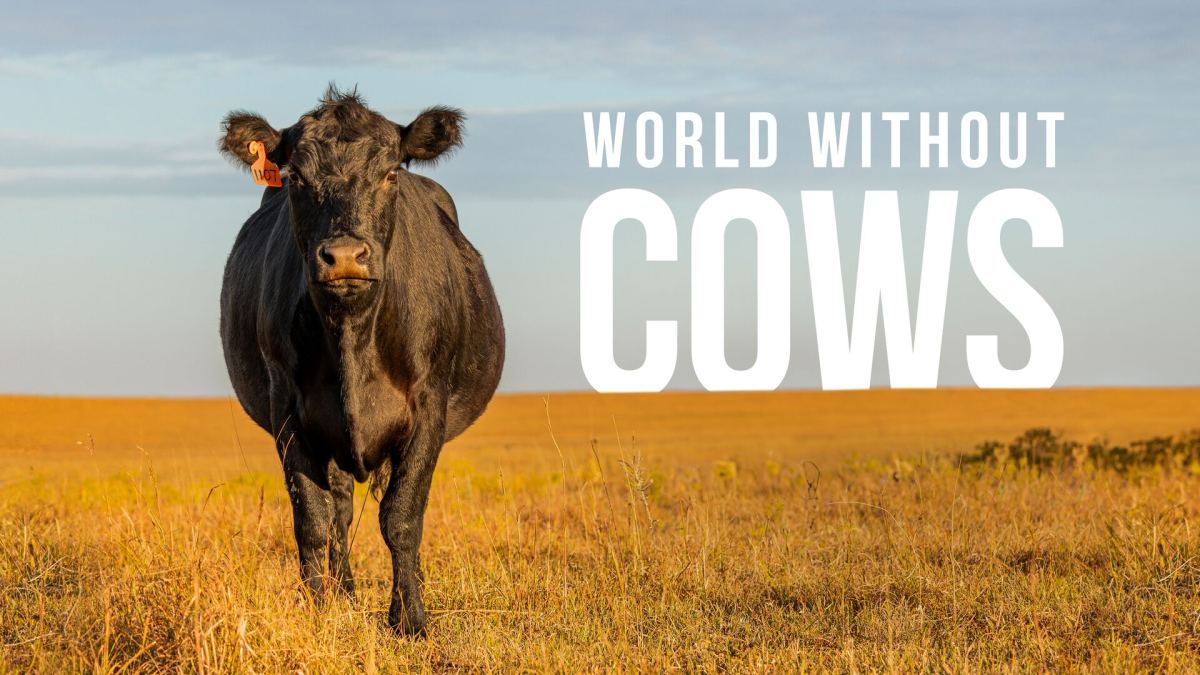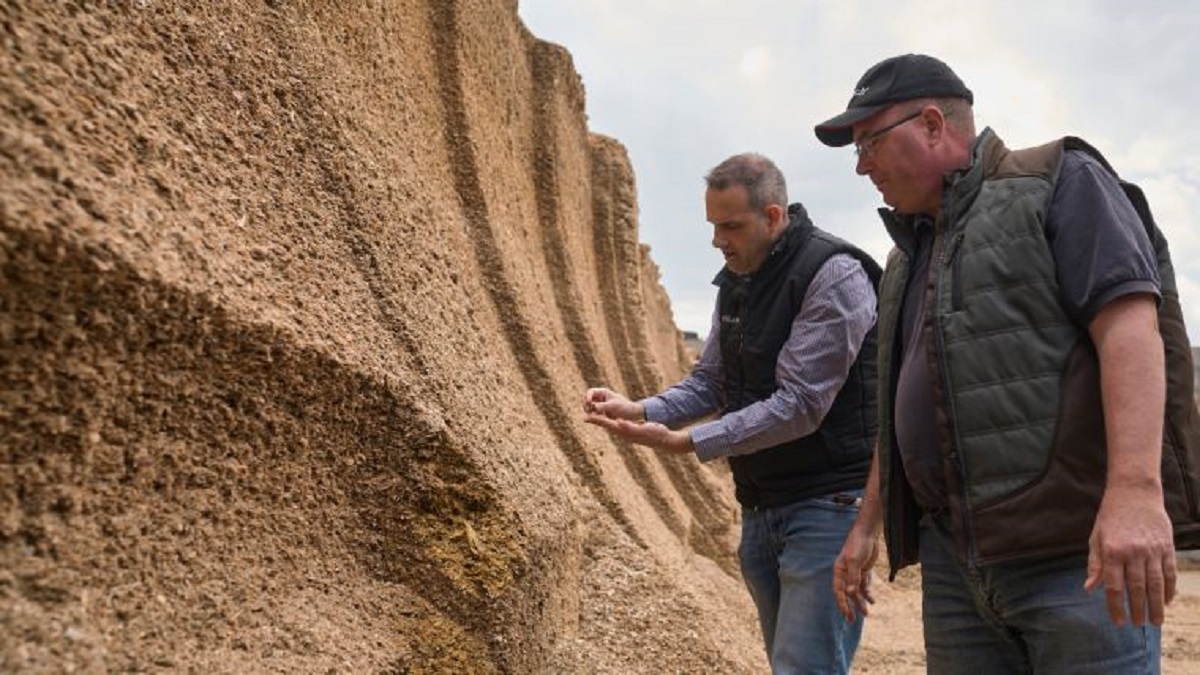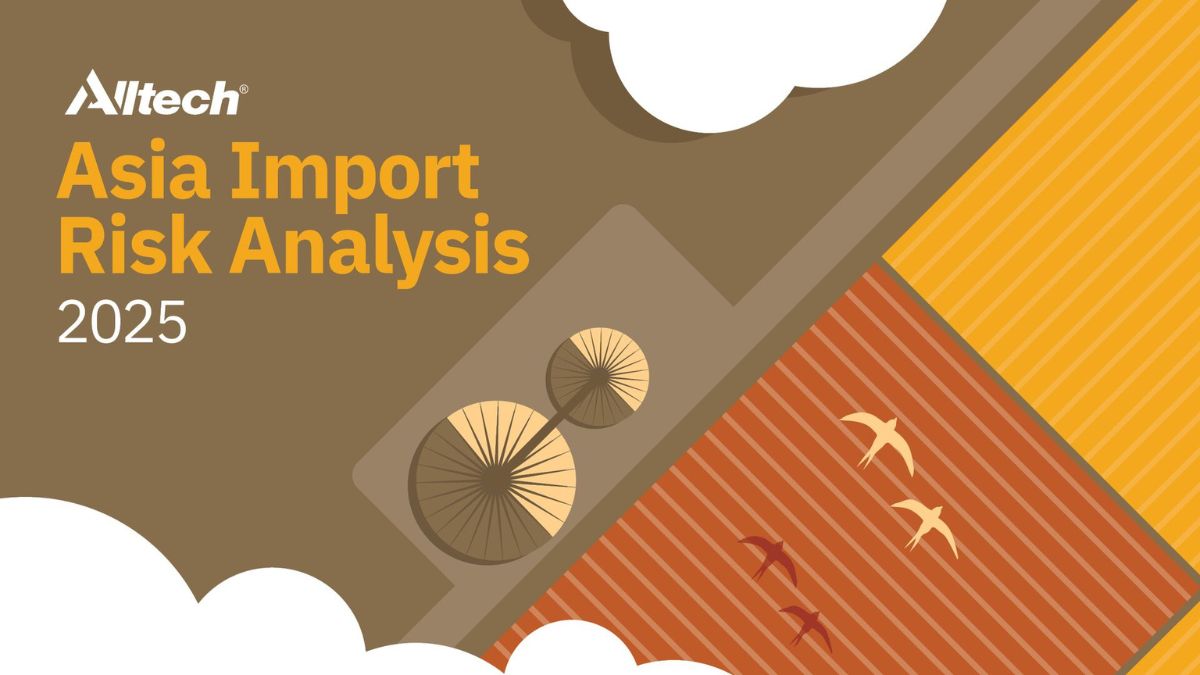
North America

Europe

Latin America

Asia Pacific

Africa

Middle East

North America

Europe

Latin America

Asia Pacific

Africa

Middle East
Alltech, empresa líder mundial en nutrición animal y ciencia de los cultivos, ha creado Planet of Plenty LLC, una nueva compañía de responsabilidad limitada dedicada a impulsar iniciativas de storytelling, apoyo y educación que fortalezcan el papel clave de la industria agropecuaria en la construcción de un futuro sostenible.
Esta apuesta se apoya en la visión de Alltech de Working Together for a Planet of Plenty®, que convoca a la comunidad agroalimentaria a crear un mundo en el que la producción agropecuaria prospere, los alimentos nutritivos sean abundantes y accesibles, y los recursos naturales de nuestro planeta se repongan para las generaciones venideras.
Hace solo dos generaciones, la mayoría de las familias estaban vinculadas al sector agropecuario. Hoy en día muchas personas no conocen de primera mano cómo se producen los alimentos en el mundo. Esta desconexión puede dar lugar a ideas falsas o discursos simplistas sobre el impacto ambiental de esta industria, el papel de los productores en el diseño de soluciones climáticas o la complejidad de alimentar a una población creciente; mientras se protegen los recursos naturales.
El objetivo de Planet of Plenty LLC es acortar brechas a través de impactantes iniciativas de storytelling, apoyo y educación en la industria agropecuaria.
“Planet of Plenty LLC llevará a las personas a un viaje por el mundo: a campos, laboratorios de investigación y comunidades agropecuarias, donde verán de primera mano la compleja relación entre el sector agropecuario, el medioambiente y la seguridad alimentaria y económica”, dijo el Dr. Mark Lyons (presidente y CEO de Alltech).
Planet of Plenty LLC actuará como un hub de colaboración en el que la comunidad agroalimentaria y otros sectores podrán:
El proyecto insignia de Planet of Plenty LLC es el documental World Without Cows (Un mundo sin vacas), que da a conocer diversas perspectivas de investigadores que estudian las emisiones de metano, ganaderos que aplican prácticas regenerativas, expertos que afrontan el desafío de alimentar a una población creciente y habitantes de comunidades rurales que dependen de las vacas para su subsistencia. Cocreado por dos periodistas galardonados que ahora trabajan en Alltech, World Without Cows lleva a los espectadores a un viaje por el mundo para que puedan conocer mejor todo lo que aportan las vacas y cómo sería el mundo sin ellas.
En los últimos seis meses, World Without Cows ha sido proyectado en festivales de cine y en eventos en todo el mundo; suscitando un debate más amplio sobre el papel esencial de la industria agropecuaria en la sostenibilidad, la seguridad alimentaria y la economía mundial.
A través de la colaboración con el equipo de comunicaciones de Alltech y su extensa red mundial, Planet of Plenty LLC seguirá creando contenidos visualmente atractivos e informativos que retraten con precisión las complejidades y oportunidades en la industria agropecuaria actual, utilizando datos respaldados por la ciencia y el storytelling para atraer al público; al igual que ha hecho en todo el mundo con Un mundo sin vacas.
A medida que crece el interés por World Without Cows, esta iniciativa ofrece a sus patrocinadores aumentar el impacto de este documental al llevarlo a nuevas audiencias. Las contribuciones económicas a Planet of Plenty LLC financiarán directamente los esfuerzos para ampliar el alcance del documental, así como otras iniciativas de storytelling y apoyo –basadas en la ciencia– que promuevan el diálogo.
“Las historias más impactantes de la industria agropecuaria las cuentan los que están en primera línea”, comentó el Dr. Mark Lyons. “Impulsar un cambio real empieza por la sensibilización, el conocimiento y el generar un debate más amplio; que es lo que Planet of Plenty LLC se esforzará por buscar”.

KEENAN and Hamilton Ross Group have announced a new and exclusive distributor partnership in central Scotland.
Chelation plays a vital role in trace mineral nutrition, but inconsistent terminology and regulatory differences have led to confusion in the animal feed industry. This article explores the chemistry of chelation, the importance of verifying complexation and the role of ATR-FTIR spectroscopy in ensuring product integrity.
[LEXINGTON, Ky.] – The city of Lexington marks its 250th anniversary with a lively celebration of Irish culture this weekend. One of the most beloved community events in Lexington, Kentucky, the annual Alltech Lexington St. Patrick’s Day Parade and Festival, will kick off the celebration on Saturday, March 15, followed by a concert by Irish festival headliner, Scythian, on Monday, March 17.
Produced by Lexington Parks & Recreation and sponsored by Alltech and the Bluegrass Irish Society, the Alltech Lexington St. Patrick’s Day Parade and Festival is the city’s longest-running civic event. Alltech has sponsored the parade since the year it was first organized by the Bluegrass Irish Society, which was founded in 1980 to celebrate Irish culture and the country’s connections to Kentucky.
Festivities begin with the traditional “Blessing of the Keg” at 10:15 a.m. at Henry A. Tandy Centennial Plaza (formerly known as Fifth Third Pavilion). The festival — featuring live music, Irish dance performances, food vendors, artisans and more — will be open until 5 p.m., and will include performances by Bluegrass Ceili Academy, Celtic Blue, Draper Family Band, Kentucky United Pipes & Drums, Liam’s Fancy, McTeggart Irish Dancers, Saint Andrew’s Academy Boys Choir and William Sutherland Reid Pipes & Drums.
The parade will take over Main Street starting at 1 p.m. This year’s parade honors Father Norman Fischer as grand marshal, with members of his family and the St. Peter Claver parish marching in his memory.
The celebration culminates on Monday, March 17, with Scythian at Transylvania University. Scythian brings its signature high-energy fusion of Celtic, Eastern European and Appalachian sounds to Lexington for the first time since 2018. Expect a barn-dance-meets-rock-concert experience that has made them a favorite on the global Irish festival circuit. The show starts at 7 p.m.; tickets are $15 at transy.edu/tickets.
For more information about this weekend’s St. Patrick’s Day celebration, visit the official parade and festival website or the City of Lexington’s event page for updates.


The annual Alltech Lexington St. Patrick’s Day Parade and Festival is Saturday, March 15 in downtown Lexington.
Silage production is a cornerstone of modern farming, ensuring high-quality feed for livestock. Yet achieving consistently good silage requires a strong foundation built on best management practices, informed decision-making, and the right tools.
Here are some insights on how farmers can optimise the silage process — from field to feed passage — by implementing practical, science-backed strategies.
Success in silage-making begins long before harvest. It starts with understanding the specific needs of the farm, including factors like machinery, storage space and feed-out rates. A tailored approach helps farmers maximise forage quality while addressing potential constraints. The key steps in establishing a solid foundation for silage production include:
Climate considerations: Selecting forage species that can withstand temperature or moisture stress.
Field preparation: Minimising soil contamination during harvest to maintain forage purity.
Fertilisation strategies: Applying appropriate nutrients for optimal forage growth and quality.
Harvest timing: Identifying the optimal growth stage for harvesting.
Ensiling best practices: Managing the harvesting and storage process effectively to preserve nutrients.
While the challenges of maintaining nutrient integrity during ensiling have remained relatively consistent over the past 15 years, advances in technology and management practices have significantly improved silage outcomes. The key principles of effective silage-making include:
Harvesting at the correct stage of maturity in a hygienic manner.
Chopping forage to an appropriate length to minimise air pockets.
Using a suitable silage treatment based on forage type and feeding system.
Rapid ensiling and compaction to achieve high-density.
Sealing silage properly and maintaining airtight conditions throughout storage.
Minimising disruption to the silage face during feed-out.
Oxygen is the enemy of good silage. When air is present, undesirable microorganisms thrive, leading to nutrient losses and heating. Historically, farmers relied on chemical salts or heterofermentative bacteria to control these issues, but this often resulted in dry matter losses and reduced nutritional value.
Today’s homolactic silage inoculates are an excellent alternative to their heterofermentative counterparts, offering advantages in fermentation and nutrient recovery. In addition, advancements in silage-making techniques and equipment have revolutionised the process, offering better control and improved outcomes:
Modern mergers and rakes reduce soil contamination during collection.
Precision chopping minimises air spaces in ensiled forage.
Improved compaction techniques enhance silage density and stability.
Enhanced defacers and block cutters preserve the integrity of the silage face during feed-out.
True oxygen barrier plastics dramatically reduce air infiltration, extending silage stability by up to four days.
With technological advancements in management, silage inoculants and plastics, farmers have more effective options for silage success — but combining them can be tricky, especially the combination of the right plastic with the right inoculant. Understanding the advantages and disadvantages here is essential to making informed decisions, ensuring that the resulting silage meets both quality and stability expectations.
At Alltech, we are committed to helping farmers navigate these choices with expert advice, on-farm support, and research-backed solutions. A good choice is an informed choice, and with the right foundation, silage success is within reach. For example, using Egalis® Ferment, a high-specification homolactic inoculant, alongside a high-tensile silage plastic with oxygen barrier properties, can deliver significant benefits.
Producing high-quality silage requires more than just following tradition — it demands a science-driven approach and modern management techniques. By combining best practices with cutting-edge solutions like Egalis Ferment, farmers can reduce dry matter losses, protect nutrients, and enhance feed stability.
Find out more about the Egalis Range.
Contact your Alltech representative for more information on these and other innovative solutions and services.

Alltech has released its 2025 Asia Import Risk Analysis, providing insights into regional and animal-specific mycotoxin risks for Asian feed and livestock producers. The report, now in its fourth edition, is based on data from the Alltech 2024 Harvest Analysis conducted in Europe and North America.
[BANGKOK, Thailand] – Alltech, a global leader in animal nutrition, has released the results of the Alltech 2025 Asia Import Risk Analysis. Now in its 4th edition, this report provides Asian feed and livestock producers with the insights needed to optimize nutritional strategies in the coming months. It uses data from the Alltech 2024 Harvest Analysis programs carried out across Europe and North America.
“The 2025 Asia Import Risk Analysis discloses significant diversity in crop quality and mycotoxin risk across the key grain-growing regions globally,” said Nick Adams, commercial director at Alltech. “Contrasting weather conditions in Europe are resulting in a distinct difference in mycotoxin profiles between grains harvested in Southern and Northern Europe. In the U.S., pre-harvest rains have created Fusarium challenges, with deoxynivalenol (DON), zearalenone and fumonisins presenting the greatest risk. These findings illustrate the importance of understanding the mycotoxin landscape when purchasing raw materials and taking a proactive approach to countering these quality challenges.”
Key themes identified from the 2024 harvest, by region:
Europe: There is a distinct difference in mycotoxin profiles between grains harvested in Southern and Northern Europe. Deoxynivalenol (DON) presents the greatest challenge in northern countries, while aflatoxin dominates in corn originating in southern regions.
U.S.: Rains pre-harvest created Fusarium challenges in the U.S., with DON, zearalenone and fumonisins presenting the greatest risk. The rains were followed by a very dry harvest, resulting in more damaged kernels and a greater percentage of foreign matter. This may present subsequent storage and shipping issues.
Canada: Fusarium toxins dominated in wheat and barley samples. Although generally, a lower risk was seen compared to the previous harvest, many individual samples contained elevated levels of mycotoxins, emphasizing the importance of routine raw material testing.
Brazil: Similar to the previous harvest, aflatoxin, DON, fumonisins and zearalenone were the primary mycotoxins of interest in Brazilian sampling programs. The average concentrations of some of the Fusarium toxins would pose high levels of risk for pigs in particular.
The report also contains risk assessments for individual species, such as broilers, grow-finish pigs and dairy cows.
For more information and to view the full results of the Alltech 2025 Asia Import Risk Analysis, visit Alltech 2025 Asia Import Risk Analysis.

Alltech has released the results of its 2025 Asia Import Risk Analysis.
Alltech is a global leader in animal health and nutrition, focused on natural scientific solutions to today’s biggest agriculture and food industry challenges. Due to our continued growth, we have a career opportunity for an Assistant Business Development Manager-Ruminants at our Dhaka office in Bangladesh. The Global Support Team comprises dynamic, professional individuals located around the globe, dedicated to outstanding services for our staff.
Please submit resumes to: zulker.siddique@alltech.com
No recruiters or phone calls, please.